Exploring Thimpu in 2 days!
This is the first post in a 3-post series chronicling our itinerary and experiences in Bhutan. Click to read about Paro and Punakha Valley
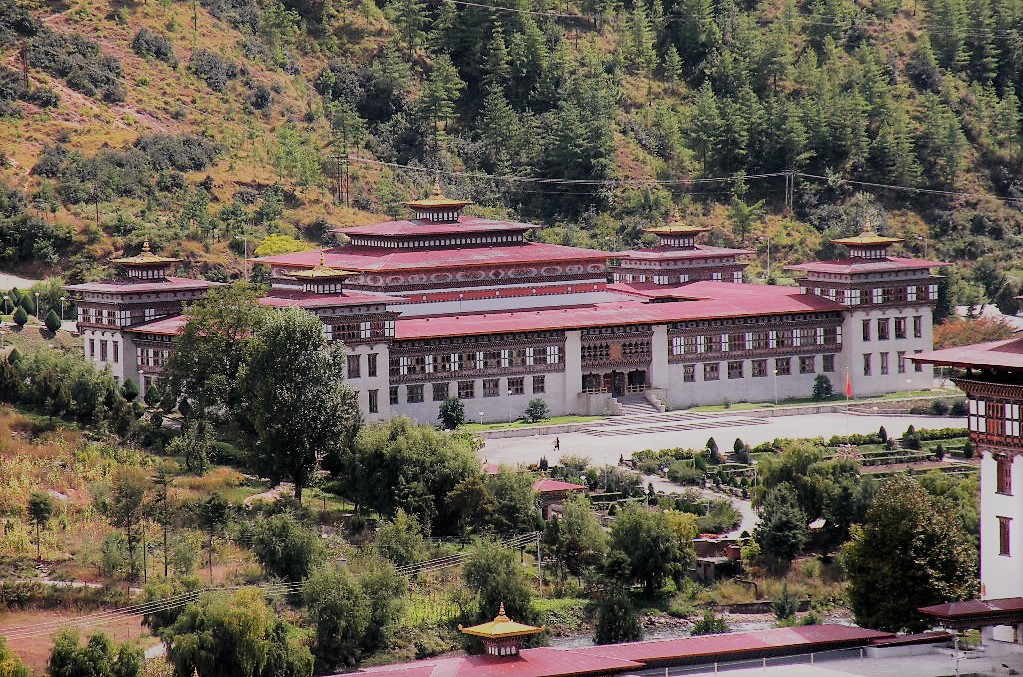
Highlights: National Memorial Chorten - Changangkha Monastery - Weekend Handicraft Market - Sangay View Point
Getting There
Armed with a guidebook, printouts from various blog entries and a properly planned itinerary, we waited for our Druk Air flight at the lounge in the Calcutta airport. Several thoughts ran through my head: Will we get left-hand side seats on the plane? Will our hotel reservations stand good? Will we get a taxi from the airport? Will Bhutan be a disappointment?
Soon we were in-air making good headway for our 1 hr. flight into Paro airport. One of the highlights of flying into Bhutan is that you will be treated to the snow-capped view of the Himalayas and if you are lucky you may glimpse Mt. Everest itself.
As our plane circled into the Paro valley, we saw the most astonishing landscape, mountains covered with pine trees, snake-like river making its way in the valley and houses perched on mountain tops.
Once in Paro, we grabbed a taxi for a three-hour ride to Thimpu. The route from Thimpu to Paro was scenic with the road running parallel to the Paro river. Landcruisers and Prado’s zipped by our bumpy Omni.
Travel Trivia: Paro International airport is designated as one of the most dangerous airports in the world; a fact that I am glad I was blissfully unaware of at that time.
We reached Thimpu early evening and decided to head to the main market square that was across the river from the hotel. The Thimpu river runs through the heart of this little city providing opportunities for great photos on the many bridges built to cross it.
On the way, we passed locals who seemed to be heading back from work, all dressed in the traditional Bhutanese costume. I paused over the bridge to look at the rushing river water. As we kept walking we came to the town square with its clock tower. It was very quaint, not bigger than the size of an American strip mall, with a single row of shops. The buildings were built in the traditional Bhutanese style with wooden windows and beams, all adorned with hand-painted motifs.
Tourism is clearly a prime vocation judging by the number of souvenir shops that I saw. As Bhutan encourages more western tourists than from India, things are very costly there. Even then the Bhutanese handicrafts are very tempting. How can you resist intricately crafted prayer wheels and lamps, exotic silk, cotton and wool fabrics, wooden handicrafts and soup bowls made from blue pine? You can’t!
Travel Tip: My recommendation is to buy clothes from regular stores away from touristy places. As for other things, there is this amazing open-air handicraft market that is set up on weekends on the river bank at Thimpu. There is a lot of variety and bargaining is the norm!
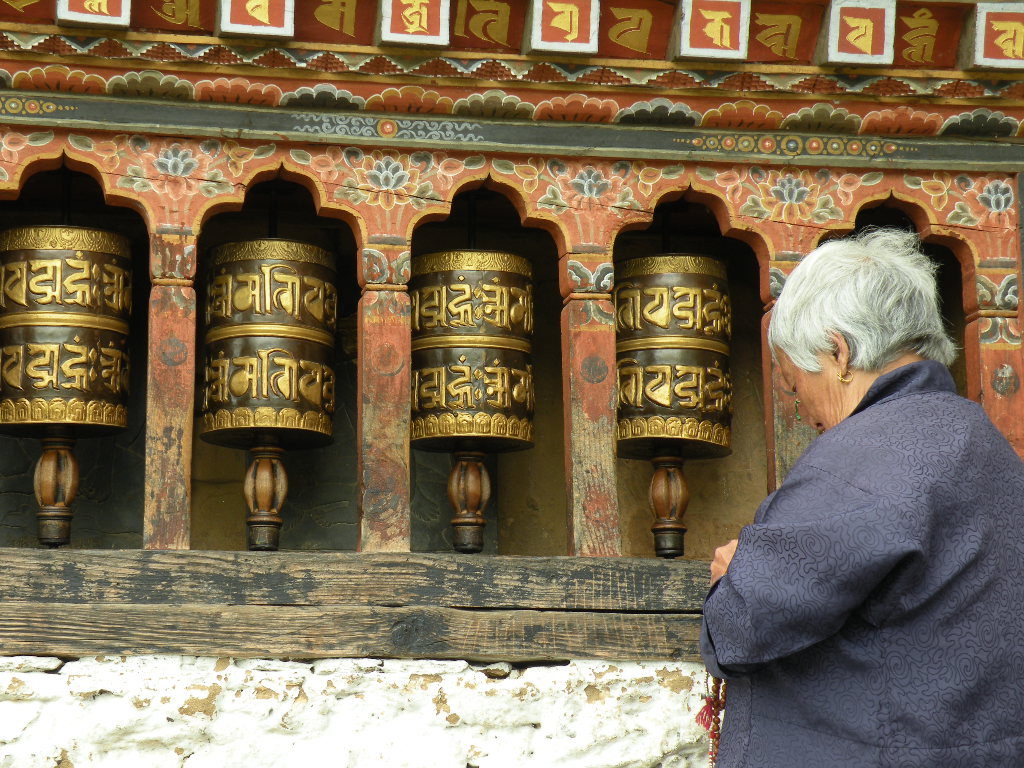
Our first stop as tourists was at National Memorial Chorten, followed by the visit to Changangkha Monastery. On the way, we saw some very well dressed people cleaning the drains along the road. Our driver explained that as the coronation of the fifth king was around the corner, the government had requested its various departments to volunteer for cleaning up the city.
Changangkha is easily accessible as it is inside the city. It was very quiet inside the monastery and monks were just getting ready for the prayers. Monasteries in Bhutan are very elaborate with intricate paintwork, brass statues, hundreds of incense sticks and oil lamps. Another image from the trip that has stayed behind is that of prayer flags and wheels. The mountains are dotted with prayer flags. I don’t know who even puts them there.
From the monastery, we drove to the Sangay view-point, which boasts of the most amazing views of Thimpu. We also drove past the National Library, Arts Museum and School of Arts & Crafts. We could not go in as they are closed for the weekend. We then drove back to the city area and passed the massive Tashichho Dzong or the Royal Palace.
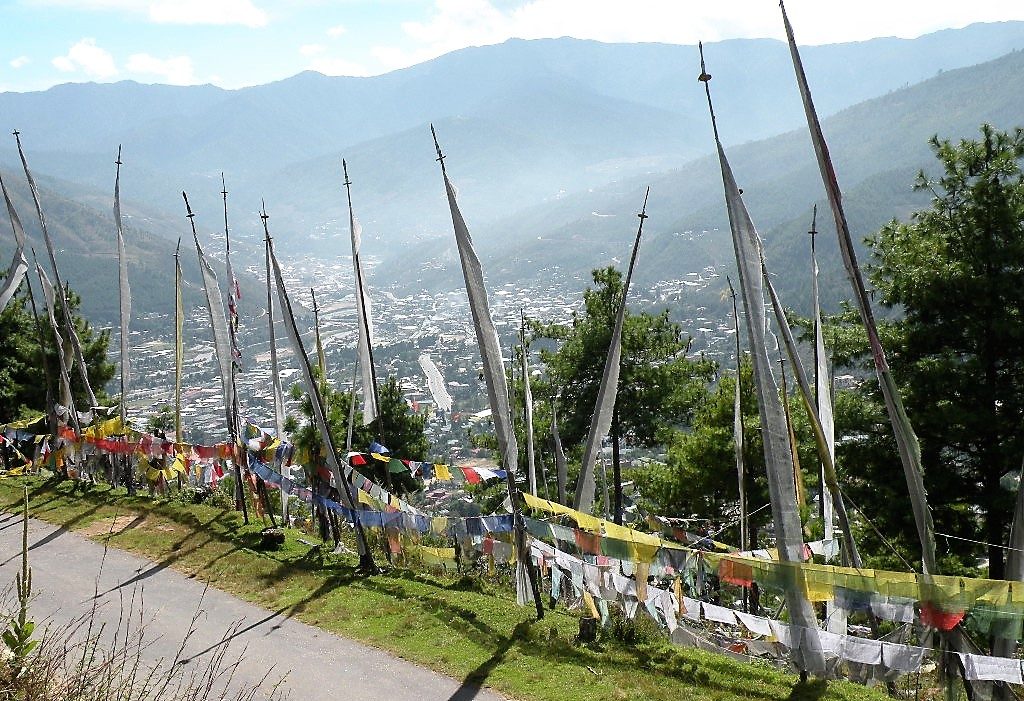
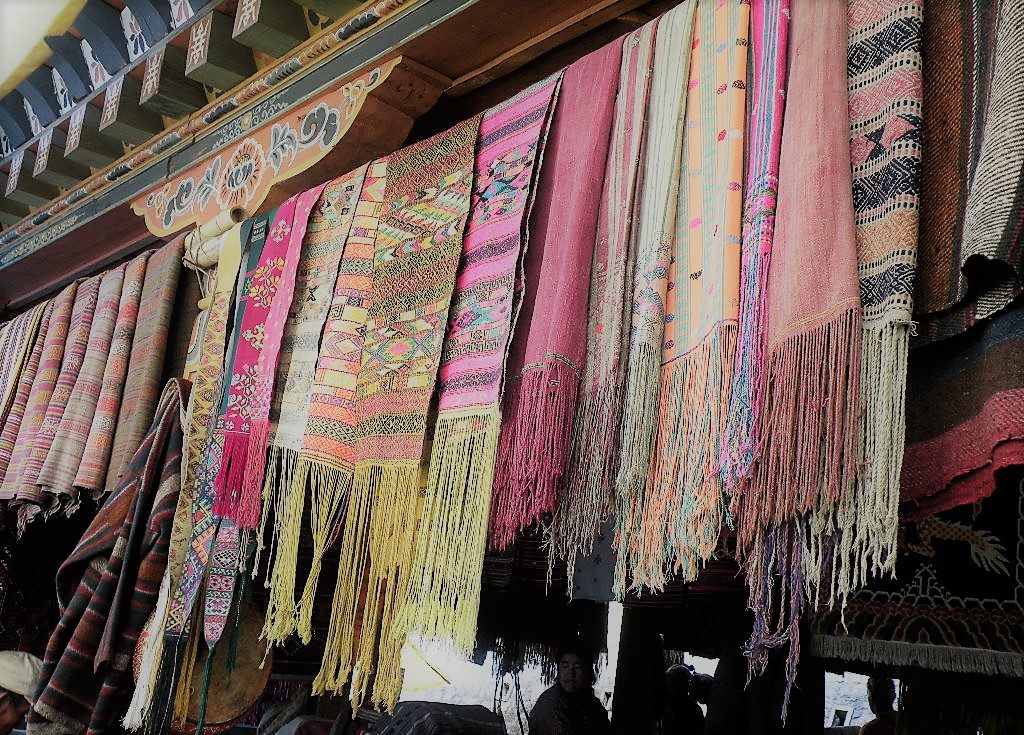
The following day we decided to walk to the weekend market and the Tashichho Dzong. The weekend market was a fun experience – the most thrilling part was walking down the steep trail on the hillside to reach the market. After browsing through the goods and picking up souvenirs we crossed the river to go to head towards the main street. Bhutan still has these charming bamboo bridges built over the river covered with prayer flags.
The main street was milling with locals out and about doing their weekend shopping, playing carom at game boards set outside shops or practicing archery in the open stadium. We strolled for several hours or so before we decided to head back to the hotel
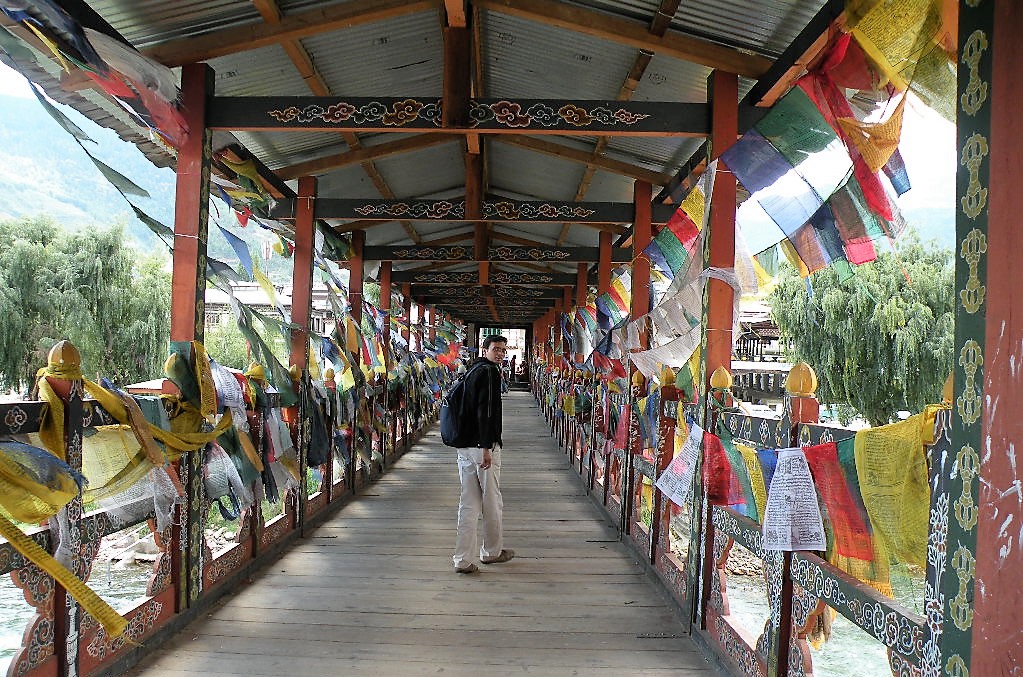
Important Things to Note
- To enter Tashichho Dzong and several other Dzong’s and monasteries permits are required. This Dzong is open to the public after 5.30 pm on weekdays and a full day on the weekends.
- The first thing that you need to do you do when you land in Thimpu is that you go to the Department of Culture and apply for a permit for all the places you need to visit. Also if you are planning to go beyond Paro to Punakha, you are going to require another permit. This takes 3-4 hours processing time so plan accordingly. If you don’t have enough time, get these permissions at the airport itself at Paro.
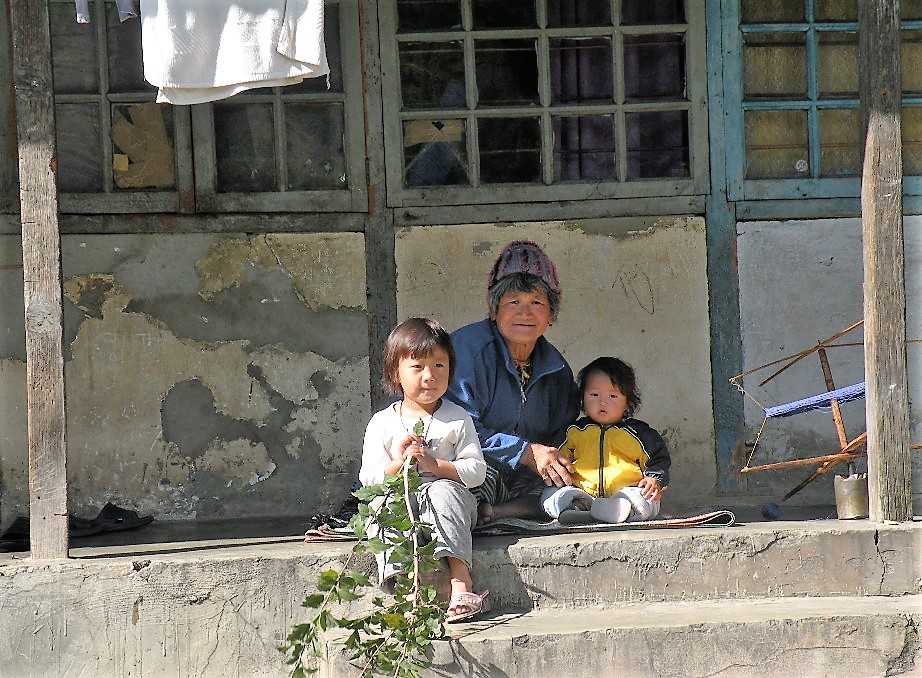

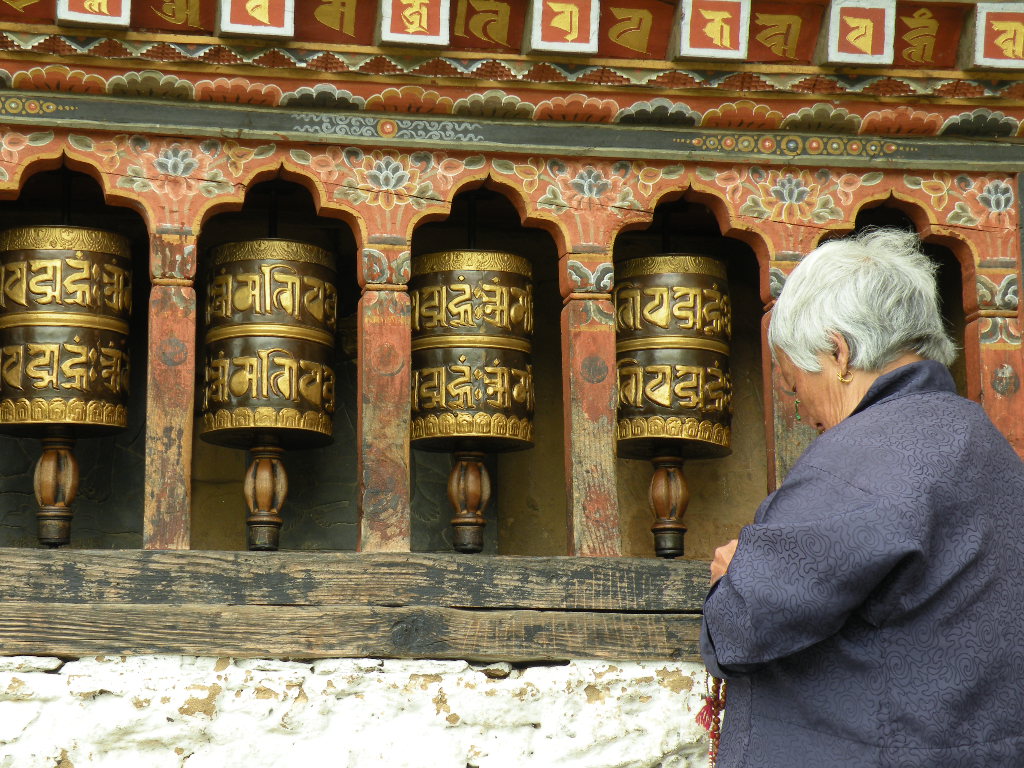

2 comments
[…] of 3 post-series on our experiences in Bhutan. The first two posts talks about our experiences in Thimpu and Punakha valley […]
[…] the 2nd part of 3 post-series on our experiences in Bhutan. The other two posts cover our time in Thimpu and […]